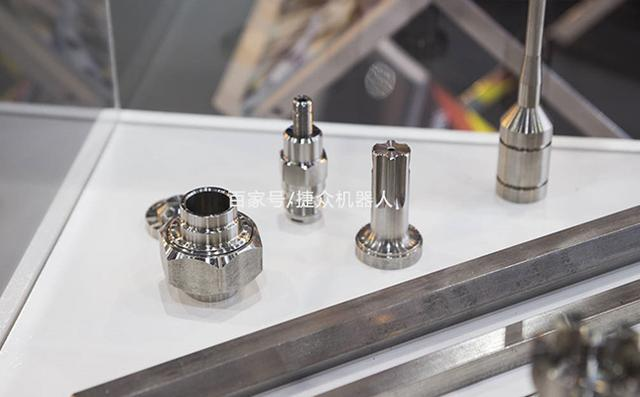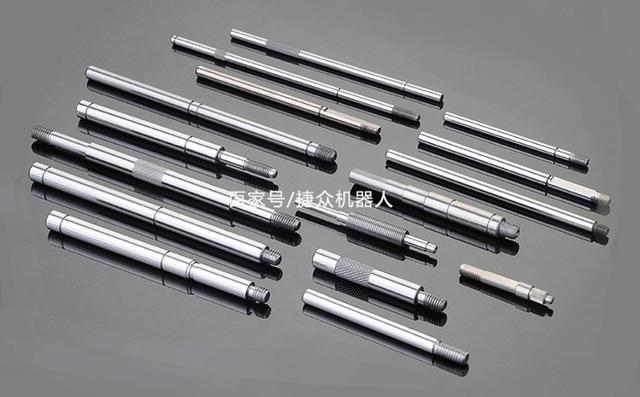-
Mobile Version
Scan with Mobile
- Member Center
 411
411
Introduction: shaft is a mechanical part that transmits motion, torque or bending moment. Each section can have different diameters and is mainly used to support transmission components, transmission torque and load. This article will focus on the topic of what material to use for shaft, and introduce the shaft material in detail.
A shaft is a mechanical part that usually has a circular cross-section. It provides a rotating shaft for various mechanical components fixed on it (such as sprocket, gear, pulley, cam, etc.), which is used to control the geometry of motion during rotation.
The axle should not be confused with the axle. In fact, by definition, the axle is actually a non rotating member that does not carry torque, but is used to support wheels and other rotating objects. An automobile shaft is not a real shaft, but a shaft by definition. When analyzing a real axle, you only need to see that it is a static beam, and then conduct a static analysis on it. On the other hand, the dynamic analysis of the shaft is also needed to determine the fatigue stress.
What material is used to make the shaft
The common materials of shafts are high-quality carbon steel 35, 45 and 50. Ordinary carbon steel, such as Q235 or Q275, is also commonly used for shafts with small loads. First, the design calculation can be carried out from the cheap low-carbon or medium carbon steel. If it turns out that strength is the main factor controlling deflection, try to use materials with higher strength to reduce the size of the shaft until the problem of excessive deflection occurs. There are also some choices of shafting materials (steel): the commonly used stainless steel materials are 430, 304 and 316, etc. 430 and other 400 series stainless steels are stainless steel. 304, 316 and other 300 series stainless steels are non-magnetic and can be strengthened by cold processing.
What material is used to make the shaft
As mentioned above, the materials of the shaft are mainly carbon steel and alloy steel. Most steel shaft blanks use rolled steel and forgings, while others use direct round steel. For the shaft requiring greater force, the size and weight of the shaft are limited, and there are some special requirements. Alloy steel can be used. 40Cr, 45c8, 40MnB, 40crni, 50c4 and 50c12 carbon steels are commonly used as shaft materials.
Some commonly used stainless steels, such as 430304 and 316. 430 and other 400 series stainless steels are stainless steel. 304316 and other 300 series stainless steels are non-magnetic and can be strengthened by cold working. Stainless steel can be heated and cooled in a process called "annealing". This is also known as the "hard soft" state. When used under high load or impact, "cold working" can be an economic means to reduce weight and increase strength. 430 section steel has little corrosion potential. Type 304 is mainly used for low humidity and temperature. Type 316 is used when corrosion-resistant stainless steel is required.
What criteria should be considered when selecting shaft materials
There are many types of shaft materials. The selection is mainly based on the strength, stiffness, wear resistance and other requirements of the shaft, as well as the heat treatment method used to meet these requirements. At the same time, the manufacturing process to be selected should be considered. Two main criteria need to be considered when selecting shaft materials. These are strength and stiffness. The stiffness is related to the young's modulus of the material, while the strength depends on the yield strength and ultimate strength of the selected material.
First, let's talk about stiffness. As mentioned above, the stiffness is a function of the young's modulus of the material. Now, for most steel materials, Young's modulus is basically constant. This means that if steel is selected as the shaft, the stiffness of the shaft does not depend on Young's modulus, but on the geometry of the shaft.
What material is used to make the shaft
Most of the load on the shaft will be perpendicular to the axis of the shaft. This means that beam analysis will be required to calculate the total deflection of the shaft. However, in some cases, there will also be axial forces on the shaft. For example, if thrust bearings are used. Finally, most shafts require torsion because they are used to transfer torque from one component to another.

